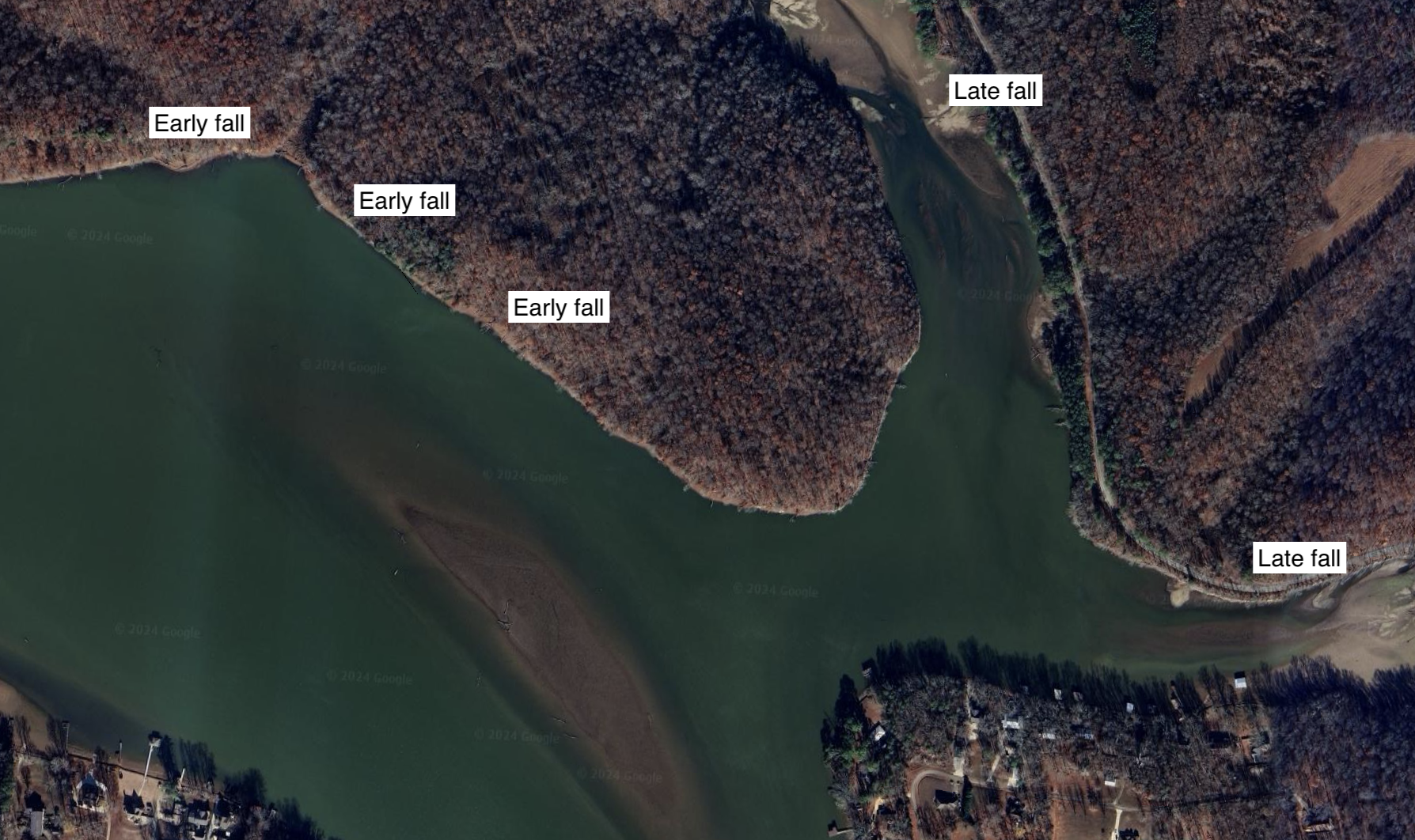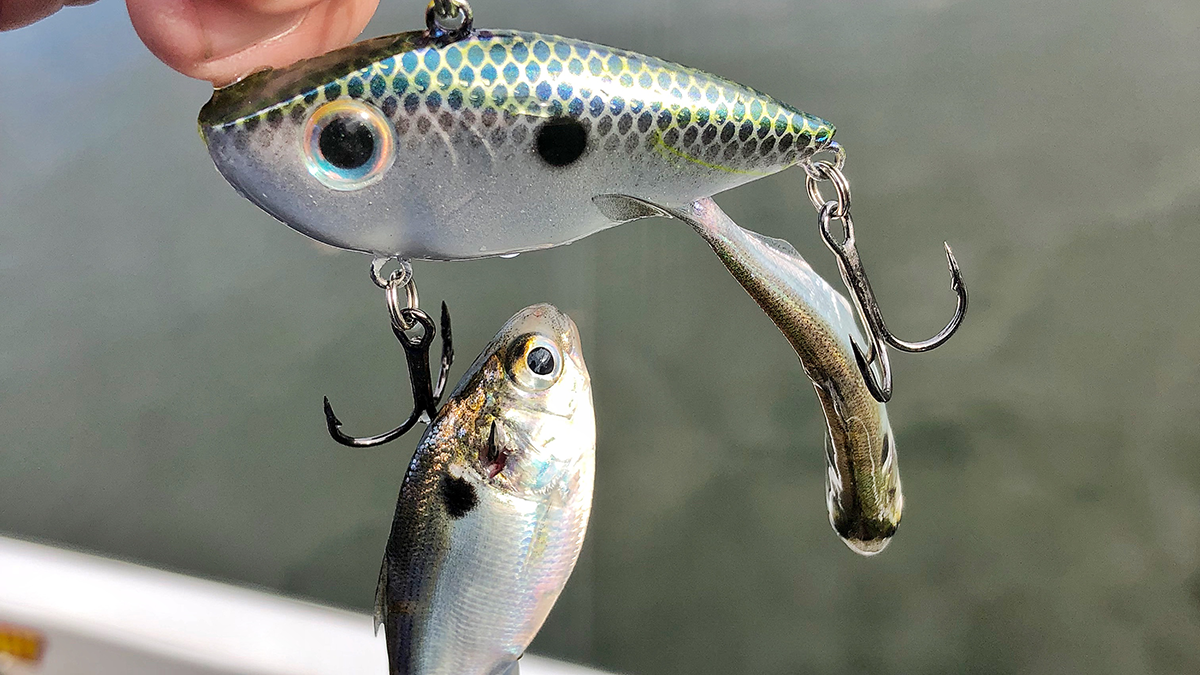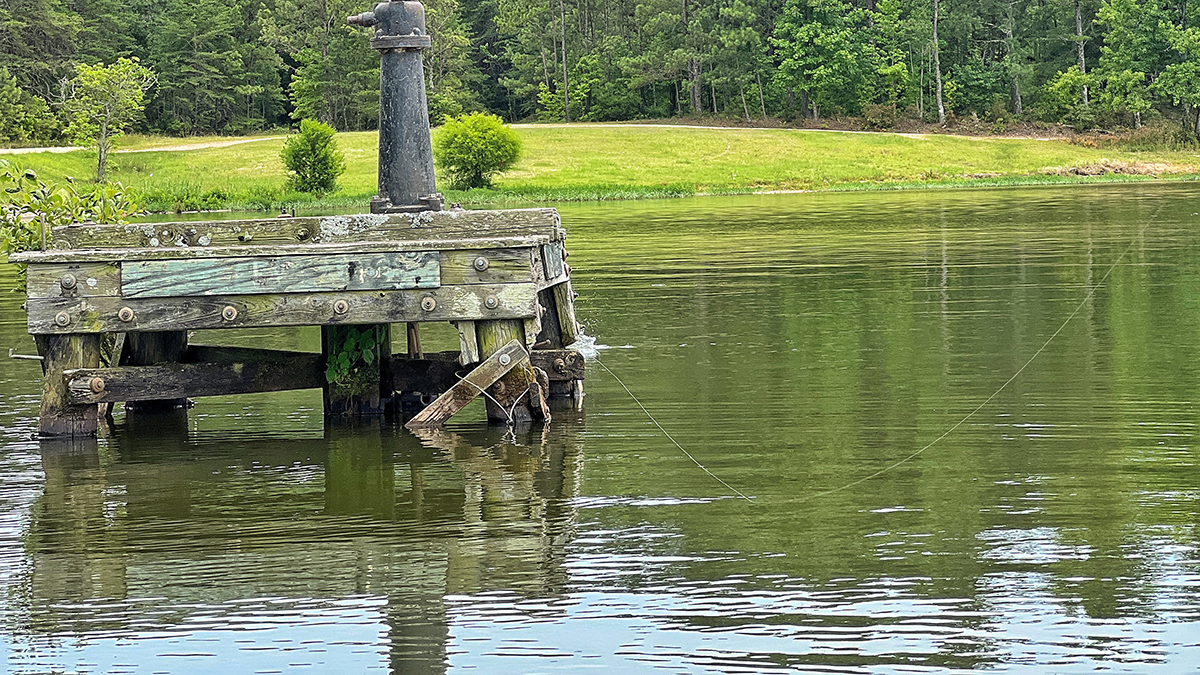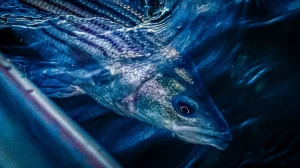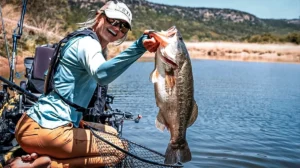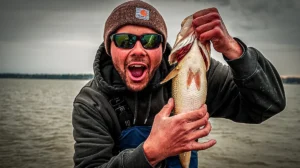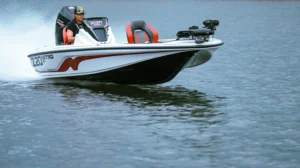We’ve almost broken free of the stranglehold of summer. The days are getting a little shorter, and that’s a bummer. But at least it takes going outside for me to start sweating at this point, instead of perspiring at just the thought of it. Ultimately, cooler nights are on the horizon, and so are cooler days.
The dropping temps mean one thing to anglers: Bass are about to be on the move, with the majority of them returning to the shallows after summering out in deeper water. But — while there will eventually be bass and bait abounding shallow — they won’t show up everywhere all at once. So, how do you find the first shallow bass of fall? Here are five quick tips.
START NEAR DEEP WATER
While bass will often swim long distances, the odds of finding bass that are moving from deep water to shallow water increase the closer to deep water you get. For example, running straight to the back of a big bay off the main lake will likely result in slim pickings the first week of October.
Instead, start along the main river channel where a channel swing pops up onto a flat near a bluff wall. Transitional areas like this will collect fish, which can slide up out of 20 feet of water and post up on a log in 2 feet of water within a matter of seconds, as opposed to having to traverse hundreds of yards to find shallow cover to hunker down by.
BAIT AND ACTIVITY
Keeping your head on a swivel this time of year is key. You want to be constantly scanning the shallows for activity along the surface. Sometimes you’ll see what my dad and I refer to as “nervous water,” where a wad of baitfish are scurrying along the surface in an attempt to out maneuver a predator below.
Other times you’ll see bass and other fish actively busting on bait. Either way, this will help you narrow down your search for shallow bass that are often sparsely scattered early in the fall. If you don’t see any bait or activity in the area, don’t waste a lot of time there. If you do see some signs of life, stay put and try to figure out how to get them to bite.
CURRENT
A little current can go a long way in helping you find shallow bass late in the summer and early in the fall. Moving water is typically cooler and more oxygenated than stagnant water. Lakes and even streams and rivers can become very stagnant during this time of the year, when rainfall is scarce and droughts set in.
Still, power companies have to generate power, which means water is often discharging below dams. These are some of the most productive areas early in the fall for finding bass shallow. It’s also a good idea to look for any creeks or even big pockets where runoff from late summer storms can concentrate fish. Watch our video on how current repositions fish for a better understanding.
COVER AND SHADE
The water temps are still in the 80s in many places south of the Mason Dixon when the calendar rolls over from summer to fall. That’s better than it was, but still a heavy burden for cold-blooded bass to bear. The environment the fish are in largely dictates their moods. And they are in the best moods when their body temps are around 72 degrees.
This is why cover and shade are so critical in the early fall. Bass are returning to the shore in pursuit of food, and need a minute to reacclimatize themselves to the warmer/shallower water. Sitting in a brush pile, posting up in a patch of grass or hunkering down under a dock gives the bass a chance to catch their breath and cool off a little–while also making them easy to target.
WATER COLOR
The color of the water can be used to help you locate productive areas as well, and more importantly rule areas out. Water will often get a green or brown tint to it in the fall, which is evidence of an algae bloom in the area. As this algae dies, the oxygen levels in the water deplete, which puts the fish in a funk and makes them hard to catch.
You’re typically better off looking for clear or even muddy water as opposed to this green/brown tinted water. These other water clarities — even the muddier water — will usually have better oxygen levels, especially if there’s a little current.
There are exceptions to this though. The algae bloom can come on suddenly, and bait and bass may already be prevalent in an area. So if you see green water but you also see bass busting on bait, definitely don’t write the area off right away. The presence of bait and bass trump the importance of the water color. But don’t be surprised if you return a day or two later and the bait and bass have both vacated the area.
FINAL THOUGHTS
Fall can offer some of the best shallow-water fishing of the season, but you have to know where to look. Take these tips out on the water the next couple weeks, and check out our video on topwater tips for the fall transition for even more info. Hopefully you can get on a good shallow bite soon.



